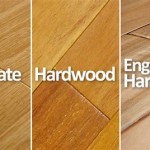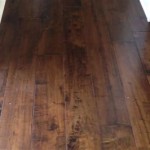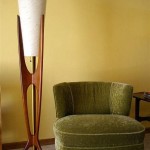European Oak Engineered Wood Flooring: A Comprehensive Overview
European Oak engineered wood flooring has gained considerable popularity in recent years as a desirable flooring option for both residential and commercial spaces. This flooring solution combines the aesthetic appeal of solid European Oak with the enhanced stability and functionality of engineered construction. The result is a product that offers beauty, durability, and versatility, suitable for various design styles and environments.
This article will provide a comprehensive overview of European Oak engineered wood flooring, covering its composition, manufacturing process, benefits, maintenance, and factors to consider when making a purchase. By understanding the characteristics of this flooring type, potential buyers can make informed decisions that align with their specific needs and preferences.
Understanding Engineered Wood Flooring
Unlike solid wood flooring, which is made from a single piece of timber, engineered wood flooring is constructed from multiple layers of wood veneer bonded together. The top layer, known as the wear layer, is a slice of real European Oak, providing the visual characteristics of the solid wood counterpart. Beneath this wear layer lie several layers of plywood, hardwood, or high-density fiberboard (HDF) that are bonded together in a cross-grain construction. This cross-grain construction gives engineered wood flooring enhanced dimensional stability compared to solid wood, making it less susceptible to warping, expanding, or contracting due to changes in humidity and temperature.
The thickness of the wear layer is a crucial factor in determining the flooring's lifespan and refinishing potential. Thicker wear layers allow for multiple sanding and refinishing cycles, extending the overall lifespan of the flooring. Conversely, thinner wear layers offer limited to no refinishing options, but generally come at a lower price point.
The core layers beneath the wear layer contribute to the flooring's structural integrity and stability. The type of core material used can impact the flooring's performance, resistance to moisture, and overall cost. Plywood cores are known for their stability and resistance to moisture, while HDF cores offer a more cost-effective alternative.
The Allure of European Oak
European Oak (Quercus robur) is a prized hardwood species renowned for its distinctive grain patterns, warm color tones, and exceptional durability. Native to Europe, this species has been historically valued for its strength, hardness, and resistance to decay. These characteristics make it an ideal choice for flooring applications.
The grain pattern of European Oak is typically characterized by prominent growth rings and medullary rays, creating a visually appealing texture that adds character and sophistication to any space. The color of European Oak ranges from light golden brown to darker shades of tan, offering versatility in design and allowing it to complement a wide range of interior styles.
Beyond its aesthetic appeal, European Oak possesses inherent properties that make it a durable and long-lasting flooring material. Its hardness rating on the Janka scale, a measure of wood's resistance to indentation, is relatively high, indicating its ability to withstand everyday wear and tear. This makes it a suitable choice for high-traffic areas in both residential and commercial settings.
The natural variations in color and grain pattern within European Oak create a unique and organic look for each floor. This inherent characteristic adds to the flooring's appeal, making it a desirable choice for those seeking a natural and authentic aesthetic.
Benefits of European Oak Engineered Wood Flooring
European Oak engineered wood flooring offers several advantages over other flooring options, including solid wood, laminate, and vinyl. These benefits stem from its unique construction and the inherent properties of the oak wood itself.
Enhanced Stability:
The cross-grain construction of engineered wood flooring makes it significantly more stable than solid wood flooring. This stability allows it to be installed in areas where solid wood flooring might not be suitable, such as basements or over radiant heating systems. The reduced susceptibility to expansion and contraction minimizes the risk of warping, cupping, or gapping.Versatile Installation Options:
Engineered wood flooring can be installed using various methods, including floating, gluing, or nailing. This versatility allows for installation on different subfloors and in various environments. Floating installations are particularly popular for their ease of installation and ability to accommodate minor subfloor imperfections.Cost-Effectiveness:
While the initial cost of European Oak engineered wood flooring can be higher than some alternative flooring options, its long-term value and durability often make it a cost-effective choice. The ability to refinish the flooring multiple times extends its lifespan, reducing the need for frequent replacements. Furthermore, the reduced labor costs associated with certain installation methods can contribute to overall cost savings.Aesthetic Appeal:
European Oak engineered wood flooring offers the same visual appeal as solid European Oak flooring, with its natural grain patterns, warm colors, and unique character. The wide range of finishes and textures available allows for customization to match specific design preferences. Whether a rustic, modern, or traditional aesthetic is desired, European Oak engineered wood flooring can provide the desired look and feel.Environmental Considerations:
Engineered wood flooring can be a more environmentally friendly option than solid wood flooring. By utilizing a thinner layer of hardwood over a core of composite materials, it reduces the demand for solid timber, contributing to sustainable forestry practices. Furthermore, some manufacturers utilize recycled content in their core layers, further minimizing the environmental impact.Maintenance and Care
Proper maintenance and care are essential for preserving the beauty and longevity of European Oak engineered wood flooring. Regular cleaning, preventative measures, and occasional refinishing can help maintain its appearance and protect it from damage.
Regular Cleaning:
Routine sweeping, vacuuming, or dust mopping is necessary to remove dirt, dust, and debris that can scratch or dull the finish. Using a microfiber mop is recommended to avoid leaving streaks or residue. Spills should be cleaned up immediately to prevent staining or water damage.Use of Appropriate Cleaning Products:
When cleaning European Oak engineered wood flooring, it is crucial to use cleaning products specifically designed for hardwood floors. Avoid using harsh chemicals, abrasive cleaners, or excessive water, as these can damage the finish and penetrate the wood. pH-neutral cleaners are generally recommended.Preventative Measures:
Placing mats at entrances can help trap dirt and debris before they are tracked onto the flooring. Using felt pads under furniture legs can prevent scratches and dents. Maintaining a consistent humidity level in the home can help minimize expansion and contraction, preventing gaps or warping.Refinishing:
Depending on the thickness of the wear layer, European Oak engineered wood flooring can be refinished multiple times to restore its original appearance. Refinishing involves sanding down the old finish and applying a new coat of sealant. This process can remove scratches, dents, and other imperfections, extending the lifespan of the flooring.Factors to Consider When Purchasing
Selecting the right European Oak engineered wood flooring requires careful consideration of various factors, including the thickness of the wear layer, the type of core material, the finish, and the installation method. Evaluating these factors will help ensure that the chosen flooring meets the specific needs and preferences of the buyer.
Wear Layer Thickness:
The thickness of the wear layer is a primary determinant of the flooring's durability and refinishing potential. Thicker wear layers allow for more sanding and refinishing cycles, extending the flooring's lifespan. Consider the expected traffic and wear in the area where the flooring will be installed, and choose a wear layer thickness that is appropriate for the intended use.Core Material:
The type of core material used in the engineered construction affects the flooring's stability, resistance to moisture, and overall cost. Plywood cores are generally considered to be more stable and resistant to moisture than HDF cores, but they also come at a higher price point. Evaluate the moisture conditions in the area where the flooring will be installed and choose a core material that is suitable for the environment.Finish:
The finish applied to the wear layer protects the wood and enhances its appearance. Different finishes offer varying levels of durability, scratch resistance, and sheen. Consider the desired aesthetic and the level of maintenance required when selecting a finish. Popular options include polyurethane, acrylic, and oil-based finishes.Installation Method:
The installation method can impact the cost and complexity of the project. Floating installations are generally easier and less expensive than gluing or nailing installations, but they may not be suitable for all subfloors. Consider the existing subfloor and the desired level of sound insulation when choosing an installation method.Budget:
European Oak engineered wood flooring is available in a wide range of price points. Setting a budget beforehand and sticking to it will help narrow down the options and ensure that the chosen flooring is within financial reach. Remember to factor in the cost of installation, underlayment, and any necessary subfloor preparation.
Blue Ridge Hardwood Flooring Passive European White Oak 5 8 In T X 9 44 W Tongue Groove Engineered 28 4 Sq Ft Case 50270

5 X 1 2 Engineered European White Oak Matte Natural Hardwood Floorin Hardwoods4less

7 1 2 X 5 8 European French Oak Unfinished Micro Bevel Southeast Special Only

Natural European Oak 3mm Veneer 9 16 T X 7 5 W Engineered Wood Floor Dekorman

All You Need To Know About European Oak Flooring Floorset

3 4 X 7 2 8 Rl Character Grade Unfinished Engineered European Oak Flooring With 4mm Wear Layer

Transform Your Space With Bowland Fells European Oak Flooring Real Wood Floors

Engineered Hardwood Flooring Dover Brown Scratch Resistant Easy Care Pet Friendly Real Wood 7 5 Wide Oak Builddirect 62 17 Sqft Case

7 1 2 X 5 8 European French Oak Unfinished Square Edge Hardwood Flooring

Rome European Oak Modern Engineered Wood Flooring 9 5 Wide







